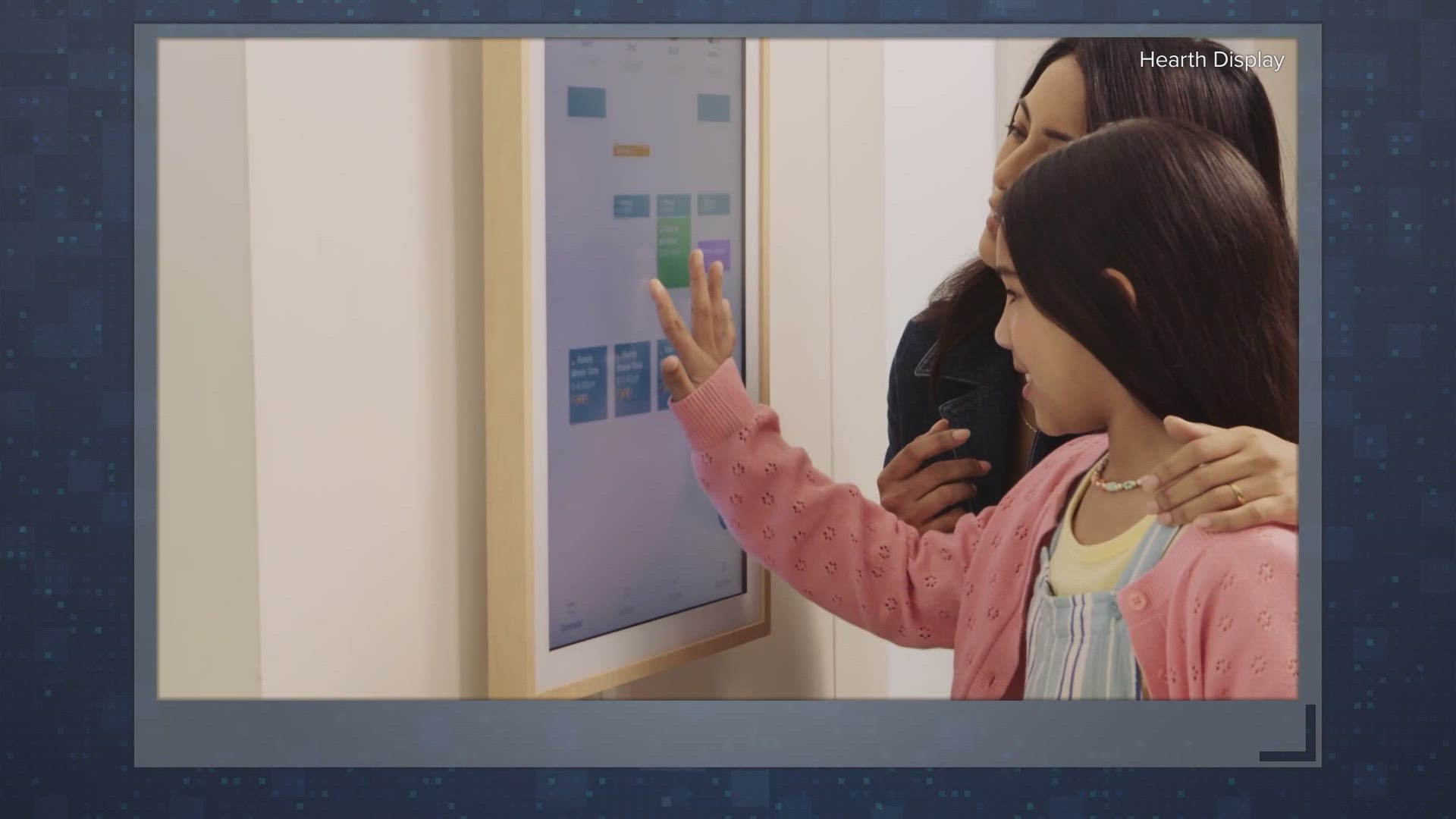FORT WORTH, Texas — It’s a familiar struggle for a lot of busy families: With schedules that feel busier and busier, how do you keep everything organized?
Between school, practice, rehearsal, shopping lists, parents’ calendars and our evermore distracted lives, a lot can fall through the cracks.
Many digitally-connected families still turn to analog solutions like paper calendars and whiteboards. But several tech companies think they may have a solution in the form of smart digital displays.
“There was not a platform for family management that’s a household name in America. So we decided to set out to make it,” said Hearth co-founder Mei-Lin Ng . Their digital display is one of several new devices targeting the digitally disorganized.
Their crowdfunding campaign for the Hearth Display was a resounding success, beating its $25,000 goal by more than $500,000, evidence of how hungry families are for help.
Their device is a wall-mounted 27” touchscreen, featuring shared family calendars, meal planning, daily routines, to-do lists and more, all syncing with Hearth’s companion app.
An optional digital assistant uses artificial intelligence to make it easy for families to snap a picture of a calendar or forward a text to simplify creating schedule items.
The biggest selling point is the big colorful screen that Hearth’s creators say is designed to be used by every member of the family.
“People need that highly visible area of the home where they know, 'Ok, this is where I go to source the information that I need,'” said Hearth co-founder Susie Harrison.
The Hearth Display is so popular that it’s been on backorder, with families quick to fork over its $599 price tag. In addition to the display, there are extra features available for a $9 monthly fee.
Another popular option comes via the Skylight Calendar. With a similar feature set to the Hearth Display, Skylight currently offers several two sizing options: a 10-inch display for $159 and a 15-inch display for $299. And Skylight is already taking deposits for their 27” Calendar Max, available in June starting at $599.
Many families are already users of Google and Amazon’s smart displays, the Nest Hub and Echo Show respectively.
Their price points are more affordable than Hearth or Skylight and they offer several extra apps and home automation functionality. However, we tried them out in our home and found that they weren’t nearly as user-friendly for family organization, especially for kids.
Another option for home users are stand-alone displays using software from companies like Mango and Dakboard that specialize in digital signage you may see commercially or at your workplace. Users can remotely control information shown on screens. But the lack of a touchscreen limits interactivity and ease of use.
Additionally, some families swear by apps like Covi and Maple that help them stay synced on their phone, computer or other digital device. But those companies have yet to create touchscreens for that “home display” experience that can replace analog whiteboards.
Simply put, families have a wide array of digital choices. And in a world where we’re rarely far from our devices, perhaps that’s just the help they need to keep everyone on the same page.
“It’s just been really gratifying,” says Hearth’s Harrison, ”To see families feel like we’re actually seeing a problem they experience, literally every day, and actually approaching this problem in the right way.”

